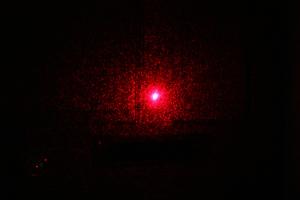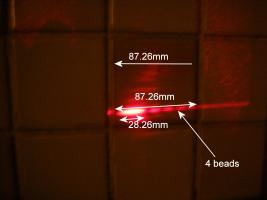

rmw
-
Posts
18 -
Joined
-
Last visited
Content Type
Profiles
Forums
Events
Posts posted by rmw
-
-
Clearly, sunlght passes through cloud cover, either directly or indirectly by re-radiation from the cloud. How much infrared radiation is filtered out by cloud cover? There is a rider here, in that all radiation, upon absorption by a surface, is transformed into heat.
So, the question is transformed into:
What fraction of solar radiation is absorbed or reflected by cloud?
How is this distributed between visible, UV and infrared radiation?
How much is transmitted through cloud and how much is absorbed and re-radiated downwards as light and heat?
Some of these questions will be interrelated and overlap.
But, it is spring here, so how much of spring warming is due to "direct" solar radiation and how much is due to seasonal changes to weather patterns bringing warmer airstreams across the land, which is transferring solar radiation from a differnet zone?
0 -
How can you differentiate between dewfall and other forms of precipitation in measurements?
How much water is deposited, say per acre or hectare, by dew?
0 -
 There has been short pause while acquired a camera that can take decent photos.
There has been short pause while acquired a camera that can take decent photos.Before we even get to single slits, double slits or even a simple sharp edge, I am having a problem with the beam itself. attached is a photo of the beam spot on a door at about 6.67 metres from the laser. Ir's a mess. I want to understand the granularity of the beam spread and why it spreads so much. I am assuming it is associated with internal reflections inside the laser housing, but I want to know more about that . have just viewed teh photo, it's rubbish and I don't know how to upload a decent versio of it
1 -
Don't rush me, don't rush me! When I have the "shortest"( i.e. length along the beam) slit, will then vary blade angles to see at what point the "canyon" effect begins to happen.
will also pass beam down polished brass tube to see what total internal relfection does. Because that will give beams of differing lengths.
All these things need to be accounted for before can even begin any experiments.
but, have to finish a couple of other projects first.
0 -
convert the sphere to an equivalent area elemental sheet, areas of successive sheets increasing with the radius. and make it out of high grade unobtanium, polished to mirror finish so you can see the truth in it.
0 -
Thanks
working through the problems.
The scatter that I refer to is not from the target, you can shield it out. So, it comes from other components. Using a craft knife edge instead of the vernier gives a different slit depth, but the scatter remains. having cleaned the optics, that leaves either the materials of the optical elements, or the internals of the sealed laser unit. Took the laser out of the housing, eliminating the optics. So that leaves the internals of the sealed laser housing. If it were the air column between the source and target, would expect thes catter to move about, but it is fixed and therefore possibly due to machining imperfections in the housing or the laser itself.
Simply don't have the equipment to make measurements directly on the beam, so a photographic method is the way to go. Using the resolution of a graphics package on a digital photograph should give good results. Need to work on getting good photographs at low light levels with a cheap camera.
0 -
Think about the energy of the rock.
at some point it has an amount, x, of potential energy and "28 m/s"worth of kinetic energy.
as the rock moves away into space, what happens to its Kinetic Energy?
If it is at escape velocity , where will it end up, and how much kinetic energy will it have?
See the way yet?
0 -
Are we absolutely sure about this?
The sphere is a hollow charged conductor when connected to one terminal of the circuit. As such, a Faraday cage, there is no electric field inside and therefore no potential gradient within it.
My sensible brain says it must work, but..............
0 -
do you think the drops will be the same size for soap solution as for pure water?
what happens if you vary the concentration of soap in the solution?
0 -
This was just "qualitative", i.e. just checking out apparatus and "how to"s.
In the absence of an optical bench, workshop drill press vise makes a very stable component holder. Vernier caliper gives easily adjustable slit width, but a craft knife blade gives a much thinner slit. by this I mean the actual depth of the slit along the beam path. Vernier caliper jaws are about 1-2mm thick which is rather like the Grand Canyon compared to wavelength of light.
First impressions are that imperfections in the internal surfaces of the laser and the laser housing itself are responsible for a lot of the side scatter i.e not in the plane of the expected interference pattern. dismantled the housing and cleaned the optics, but this did not give much improvement.
Before I take any serious measurements, I want to understand why the laser spot is not pin sharp.
I also need to buld a fully adjustable slit device and work out a method of photographing the interferenfce patterns so that I can use my PC's graphics package to make measurements.
0 -
Think logically and carefully.
All the patients were tested, but only 250 had positive tests.
But 300 altogether had cancer. that means 300 - 250 had cancer, but tested negative. False negatives 50
Now, of the 250 that tested positive, only 84% (210) actually had cancer. that means 40 tested positive but did not have it. False positives 40
The 210 who tested positive and actually had cancer are the true positives. True positives 210
So, 4543 - 300 (4253) did not have cancer. But, of these, 40 had false positive tests. That leaves 4253 - 40 as true negatives. True negatives 4213.
On the other hand, I know absolutely nothing about this so I could be wrong.
0 -
-
anyone know where I can find a complete account of the experiment, with dimensions, materials, readings, etc.
all I ever see are reports summarising - well, what exactly?
And conclusions drawn from heresay, which is a euphamism for conjecture
0 -
There's something wrong here. I need to dig out my books with proper details of the experiment. there is an itch on the inside of my skull that tells me it ain't right.
0 -
As I understand it, the experiment concerns the wave/particle duality of the photon.
In the latter phases of the experiment, single photons are fired at the dual slit on the assumption that the photon particles can only pass through one slit or the other, but not both. It has been suggested that observation of the photons affects the outcome.
To me, this seems obvious as I do not see how a photon can be observed without interaction. At the very minimum, information has to be extracted from the system in order to give an output observation. As I see it, this means that the observation station is no longer a "waypoint" on the photon's journey Ato C, but a "staging point" between two journeys A-B and B-C.
That changes the entire nature of the experiment.
0 -
Is there anywhere that could describe this in a terrestrial language, say, English? Does it fulfil the criteria that the journey of the photon from source, A, to target screen, C, via the slit wall, B, is not modified by observation to consist of two journeys, A-B and B-C? what is the criterion for non-perturbation of the system? Because, since the outcome appears to depend upon whether or not there is an observation, this is a crucial point. The fact of a changed outcome would strongly indicate that the observation did have a non-transient, permanent interaction with the photon.
If memory serves, this experiment and its adherent theory was carried out before quantum nondemolition measurements were available.
0 -
What i have never understood is how do you detect a photon without intereacting with it, either by capturing it or in some other way modifying it and thus compromising the entire experiment?
0





The Universe and ATC
in Astronomy and Cosmology
Posted
ATC 20210525.docx